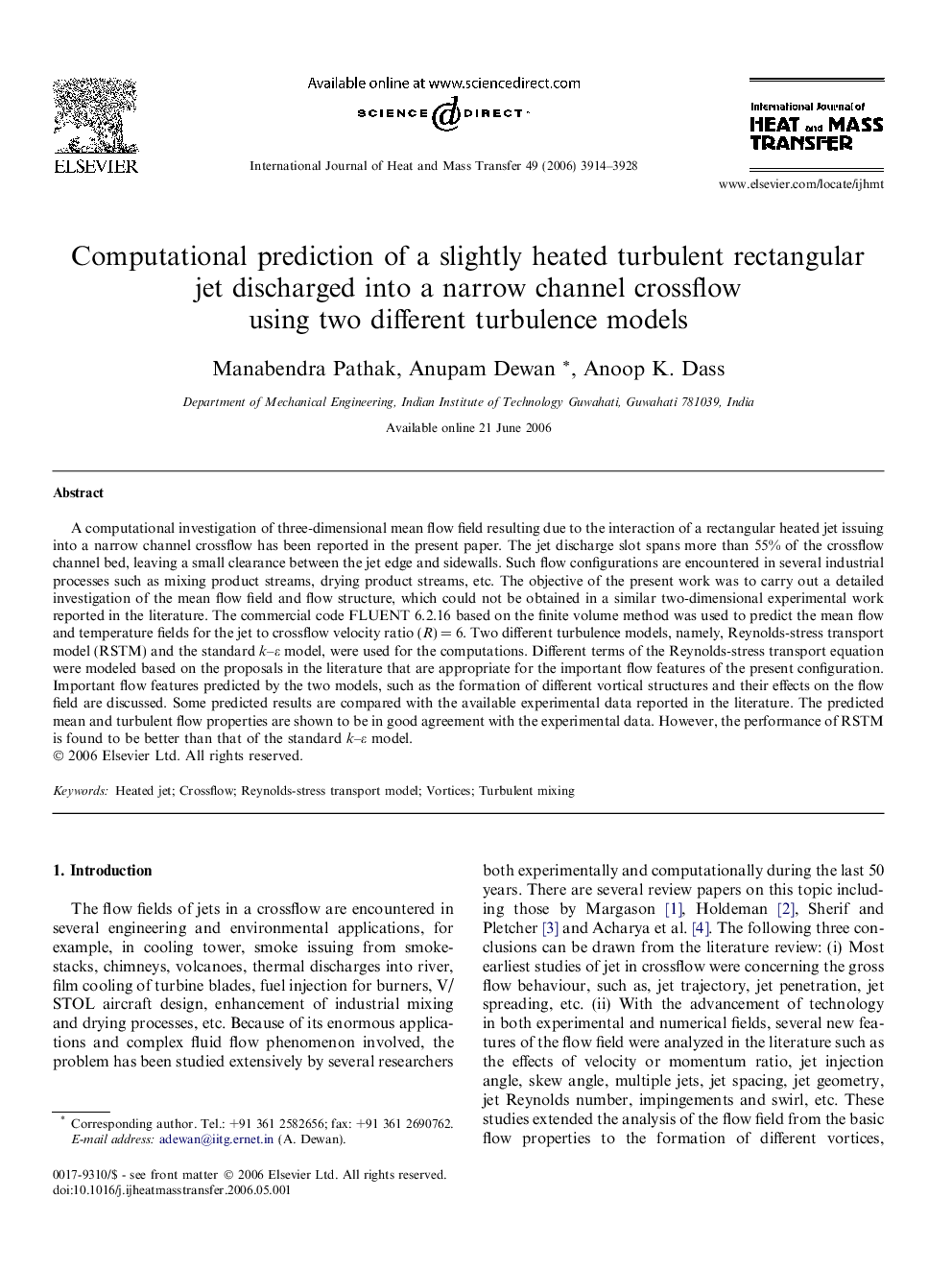| Article ID | Journal | Published Year | Pages | File Type |
|---|---|---|---|---|
| 661624 | International Journal of Heat and Mass Transfer | 2006 | 15 Pages |
Abstract
A computational investigation of three-dimensional mean flow field resulting due to the interaction of a rectangular heated jet issuing into a narrow channel crossflow has been reported in the present paper. The jet discharge slot spans more than 55% of the crossflow channel bed, leaving a small clearance between the jet edge and sidewalls. Such flow configurations are encountered in several industrial processes such as mixing product streams, drying product streams, etc. The objective of the present work was to carry out a detailed investigation of the mean flow field and flow structure, which could not be obtained in a similar two-dimensional experimental work reported in the literature. The commercial code FLUENT 6.2.16 based on the finite volume method was used to predict the mean flow and temperature fields for the jet to crossflow velocity ratio (R) = 6. Two different turbulence models, namely, Reynolds-stress transport model (RSTM) and the standard k-ε model, were used for the computations. Different terms of the Reynolds-stress transport equation were modeled based on the proposals in the literature that are appropriate for the important flow features of the present configuration. Important flow features predicted by the two models, such as the formation of different vortical structures and their effects on the flow field are discussed. Some predicted results are compared with the available experimental data reported in the literature. The predicted mean and turbulent flow properties are shown to be in good agreement with the experimental data. However, the performance of RSTM is found to be better than that of the standard k-ε model.
Related Topics
Physical Sciences and Engineering
Chemical Engineering
Fluid Flow and Transfer Processes
Authors
Manabendra Pathak, Anupam Dewan, Anoop K. Dass,
